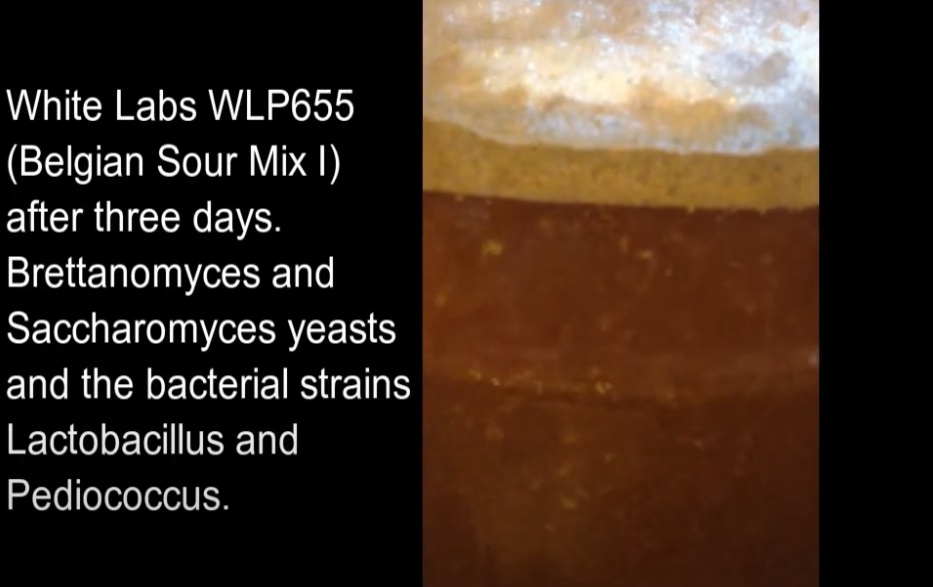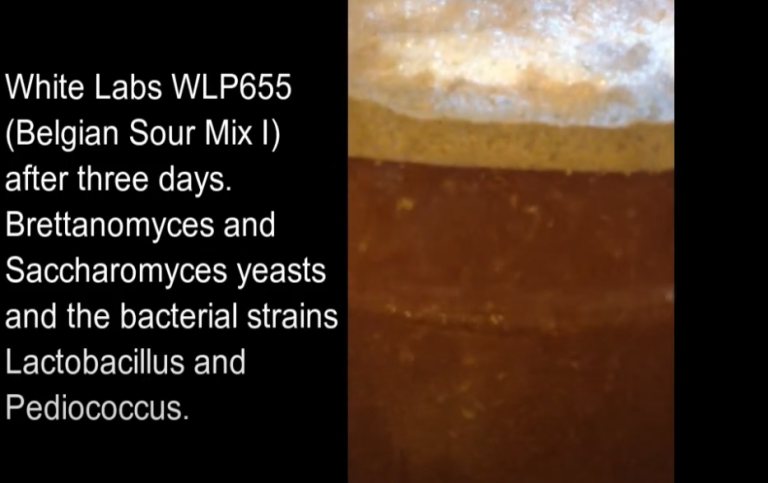As someone who’s passionate about homebrewing, I’ve always been intrigued by sour beers. There’s just something captivating about their complexity—tart, funky, and refreshing all at once. Recently, I decided to dive deeper into brewing sour ales at home, and that’s when I came across White Labs’ Belgian Sour Mix I, or WLP655.
White Labs is widely respected in the brewing community, known for producing high-quality, reliable yeast strains. I’ve used their products in the past, with consistently excellent results, so choosing WLP655 felt like a safe and exciting bet for exploring sour ales.
What’s Inside WLP655?
When I first learned about WLP655, I was fascinated by how carefully White Labs crafted this blend. Unlike regular brewing yeast, WLP655 contains multiple microorganisms working together to create complex sour flavors. Here’s what’s in it, and why that matters:
- Saccharomyces Yeast:
This is your typical brewing yeast responsible for initial fermentation. It converts sugars into alcohol and carbon dioxide, providing the base beer that will become sour over time. - Brettanomyces (or “Brett”) Yeast:
Brett is wild yeast famous for producing the funky, earthy, and fruity aromas characteristic of many Belgian-style sours. Over several months, Brett transforms the beer, giving it a depth that’s truly remarkable. - Lactobacillus:
This bacterium produces lactic acid, which gives the beer its signature crisp, tart sourness. If you love that refreshing tang in sour beers, Lactobacillus is key. - Pediococcus:
Pediococcus also contributes sourness by creating lactic acid but does so more slowly than Lactobacillus. It often produces buttery notes (diacetyl), which Brettanomyces typically cleans up over time.
Knowing this microbial teamwork happening inside my fermenter makes brewing with WLP655 feel like a true adventure.
Why Did I Choose WLP655 Specifically?
I picked this blend for several reasons:
- It provides an authentic Belgian-style sour beer character without needing separate inoculations of multiple organisms.
- White Labs blends microorganisms specifically selected to work harmoniously together, making it easier for homebrewers like me.
- Many brewers recommended it as beginner-friendly for sour brewing—though patience is required for aging!
This felt like the perfect way to experiment and learn more about crafting complex sour beers at home.
Fermentation Characteristics and Best Practices
When I first started brewing sour beers using White Labs WLP655, I quickly realized that this yeast blend doesn’t behave exactly like the standard ale yeasts I was accustomed to. The fermentation process is dynamic, lengthy, and requires special care—especially when it comes to temperature and patience.
Understanding the Fermentation Process
With WLP655, fermentation happens in distinct phases, each dominated by different microbes:
- Initial Fermentation (First few weeks):
At first, Saccharomyces yeast takes center stage, rapidly consuming sugars to produce alcohol and carbon dioxide, similar to a traditional beer fermentation. This stage felt familiar and predictable, with vigorous bubbling and a quick drop in gravity. - Secondary Souring Stage (Next 1–6 months):
After the initial activity slowed, I noticed the beer slowly began to sour. This is when the Lactobacillus and Pediococcus bacteria started producing lactic acid. At this point, the beer developed its characteristic tartness. Progress was slow but noticeable as I periodically tasted samples. - Flavor Development and Maturation (6–12 months or longer):
Over time, Brettanomyces yeast came to life, significantly enhancing the complexity of the beer. Flavors evolved from simple tartness to richer notes like tropical fruit, earthiness, and subtle funkiness. This was by far the most fascinating (but also patience-testing) part of the fermentation.
Managing Fermentation Temperature
White Labs recommends fermenting WLP655 at temperatures between 80–85°F. Initially, I was surprised by this advice since most ales ferment around 65–70°F. However, I learned that these warmer temperatures encourage microbial activity and speed up souring and flavor development.
Here’s how I approached temperature management:
- Early Fermentation:
I allowed the beer to ferment around 75°F to 80°F to give Saccharomyces yeast optimal conditions for a healthy start. - Secondary Fermentation and Aging:
I gradually increased temperatures to about 80–85°F to encourage souring bacteria and Brettanomyces to thrive. I found this warmer range accelerated sourness without causing unwanted flavors, but it’s crucial to avoid going much higher to prevent off-flavors.
Maintaining these temperatures required careful attention to my brewing space. I used temperature controllers and a heat wrap around my fermentation vessel to keep conditions stable.
Best Practices I Learned Along the Way
To get the best possible results from fermenting with WLP655, I discovered a few critical best practices:
- Patience is essential.
Unlike standard beer yeast, this mix requires months to fully develop the desired flavors and sourness. Rushing the beer leads to underdeveloped flavors. - Sanitation matters more than ever.
Because WLP655 contains wild yeast and bacteria, careful sanitation is crucial. I dedicated certain equipment exclusively to sour beers to avoid cross-contamination with my regular brews. - Regular tasting helps track progress.
Sampling the beer periodically allowed me to observe flavor development, detect issues early, and ultimately decide the optimal time to bottle or keg.
Brewing Process and Recipe Considerations
After familiarizing myself with WLP655 and getting a handle on fermentation specifics, I turned my attention to designing the right recipe and optimizing my brewing process. Brewing a Belgian-style sour ale using this yeast blend required careful planning—but the payoff was incredible.
Choosing the Right Ingredients
For my recipe, I focused on simplicity and balance to allow the yeast and bacteria in WLP655 to really shine. Here’s what guided my decisions:
- Base Malt:
I chose Pilsner malt because it provides a clean, neutral foundation. Belgian Pilsner malt worked great, though standard 2-row malt would be fine too. - Specialty Malts and Adjuncts:
To add subtle complexity, I included a modest amount of wheat malt—around 10-15%. Wheat helps give the beer a slightly fuller mouthfeel and a nice haze, common in sour beers.
Occasionally, I’d add a small amount of oats (about 5%), just to round out the mouthfeel and provide smoothness. - Hop Selection:
Sour beers typically have very low bitterness, so I aimed for low IBUs (around 5–10 IBUs). I used minimal bittering hops and avoided late additions, as hop bitterness inhibits Lactobacillus activity.
Mashing and Boiling Techniques
When it came to mashing, my goal was to encourage fermentability without thinning the beer out too much.
- Mash Temperature:
I targeted a slightly lower mash temperature, around 148–152°F. This lower range creates a more fermentable wort, allowing the yeast and bacteria to fully dry out the beer and enhance tartness. - Mash Duration:
A standard 60–90 minutes was sufficient. Longer mashes improved fermentability, but after 90 minutes, returns diminished significantly. - Boil Length:
I typically boiled the wort for 60 minutes, just long enough to sanitize and concentrate flavors slightly. Longer boils didn’t noticeably improve my results, and I liked keeping my process simple.
Fermentation and Aging Practices
Once my wort was prepared and cooled, I followed these steps carefully:
- Pitching Yeast:
I pitched WLP655 directly into the cooled wort at about 75–80°F, making sure my wort was well oxygenated for a healthy start. - Primary Fermentation:
This stage lasted roughly two to four weeks. I kept the fermenter in a stable environment, checking periodically but avoiding unnecessary disturbances. - Secondary and Aging:
After primary fermentation settled down, I transferred the beer to glass carboys for secondary fermentation and aging. I found this helped me monitor clarity and flavor development closely. Typically, I’d age the beer anywhere from 6 months to a year, regularly tasting samples every few weeks.
Things I Learned from the Brewing Process
Throughout this process, I learned a few key lessons worth sharing:
- Don’t rush the process:
Letting the beer age fully allowed the complexity and desired sourness to develop naturally. - Keep it simple:
Using fewer ingredients and focusing on technique allowed the yeast to produce authentic sour beer characteristics without distractions. - Take detailed notes:
Documenting the recipe, temperatures, and tasting notes helped me refine my future brews significantly.
In the next and final part, I’ll share some practical insights from other homebrewers, including common challenges and how to overcome them, as well as tips I’ve personally found valuable while brewing with WLP655.
Practical Insights & Tips from My Brewing Experience
After several batches of sour beers brewed with WLP655, I’ve learned valuable lessons—some from success, others from challenges. This section is all about sharing the insights I’ve gained along the way, including helpful tips from other brewers who’ve taken the journey before me.

Common Challenges I Faced (and How I Overcame Them)
Brewing sour ales can feel unpredictable at times, but addressing these common issues helped me achieve consistent results:
- Managing High Fermentation Temperatures: Initially, I worried about maintaining the recommended 80–85°F range.
- To handle this, I used:
- A fermentation chamber with a temperature controller.
- Heat wraps and insulation blankets during colder months.
- To handle this, I used:
- Cross-Contamination with Other Beers: The wild microbes in WLP655 posed a contamination risk to my other batches.
- My solutions included:
- Dedicating separate fermentation and packaging equipment specifically for sour beers.
- Labeling clearly all equipment used exclusively for sours.
- My solutions included:
- Inconsistency Between Batches: I noticed slight differences in sourness and flavor complexity from batch to batch.
- Improved consistency by:
- Maintaining detailed brewing logs (fermentation temperatures, tasting notes, gravity measurements).
- Adjusting aging periods based on sensory evaluations rather than strictly following the calendar.
- Improved consistency by:
Tips That Helped Me Succeed
Here are the most valuable tips I picked up from my experiences and conversations with fellow homebrewers:
- Taste Frequently, but Be Patient:
- Regular tastings allowed me to track flavor progression, catching potential issues early.
- I learned to be patient, letting the beer evolve until it reached peak complexity—even if it took months longer than expected.
- Simplify Recipes for Best Results:
- Initially, I experimented with multiple specialty malts and adjuncts. Over time, I realized simplicity is best—letting the yeast and bacteria define the beer’s character.
- A straightforward malt bill allowed clearer assessment of yeast-driven flavors.
- Sanitation is Paramount:
- Rigorous sanitation (more than normal homebrewing) prevented unintended microbial contamination.
- Dedicated equipment and regular, thorough cleaning were essential to quality sour beer.
Insights from the Homebrewing Community
Connecting with other brewers taught me valuable perspectives I hadn’t considered initially:
- Controlling Sourness:
- Some brewers start with a primary fermentation using a clean yeast, then pitch WLP655 during secondary. This helps manage sourness levels more precisely.
- I experimented with this method, finding it effective for achieving desired acidity.
- Blending for Balance:
- Several experienced homebrewers blend batches to achieve consistency or balance sourness.
- Although I haven’t blended extensively yet, it’s an exciting area I’m eager to explore more in the future.
Final Thoughts and Encouragement
Brewing with WLP655 opened my eyes to the depth and possibilities of crafting Belgian-style sour ales. Though challenging at times, the results were incredibly rewarding, teaching me patience, adaptability, and careful attention to detail.
If you’re considering brewing your first sour beer with WLP655, remember:
- Start simple.
- Be patient.
- Keep detailed notes.
- Don’t hesitate to lean on the homebrew community for advice.
Happy brewing!
© 2000-2025 by Homemade.us All rights reserved. No part of this document may be reproduced or transmitted in any form or by any means, electronic, mechanical, photocopying, recording, or otherwise, without prior written permission.

Leave a Reply